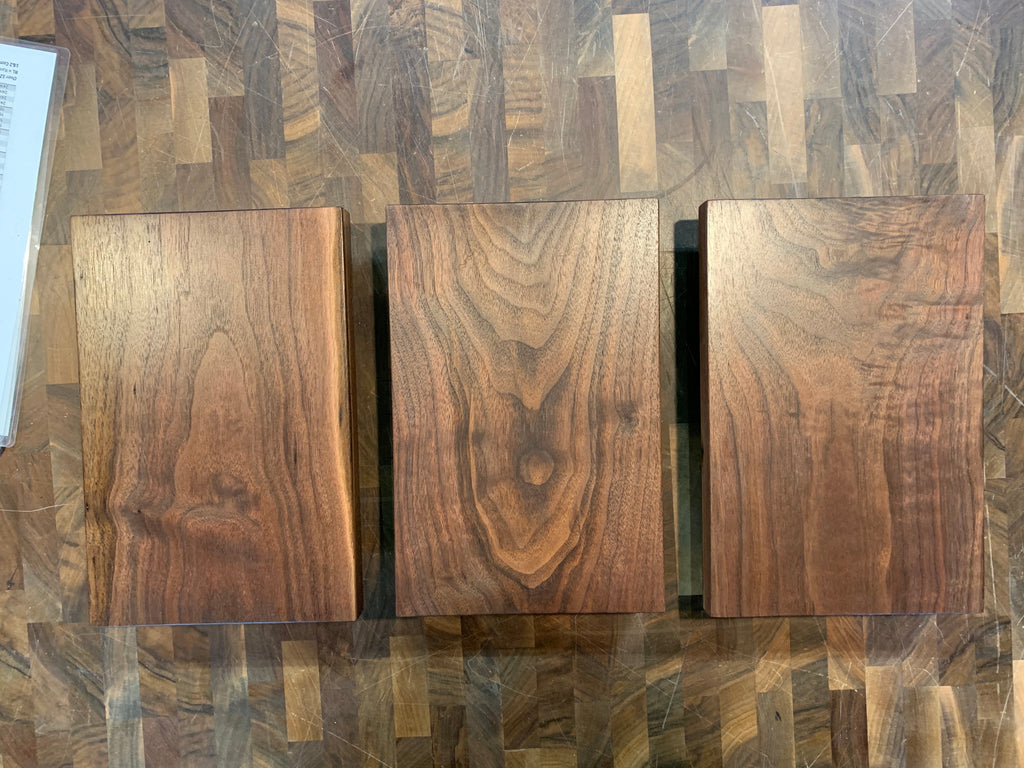

Also suitable for children’s toys, cots, bassinets and playpens etc. Wood Wax Finish is suitable for timber furniture such as shelving, doors, architraves, sarking and paneling. Easy application - no need for sanding between coats, which saves time and money. Resistant to water and dirt, is wipe-proof and stain resistant. It is possible to create an almost infinite variation of naturally occurring colour shades to enhance the grain showing a gorgeous, natural colour tone or if you prefer a choice of intensive, bright or vivid colours - Wood Wax Finish is the product to give your interior wood a durable surface that adapts to the demands of life. If you still find the need to thin the PolyX-Oil then I'd instead use a little more solvent - or just use it as it is intended because the Germans have developed these products over the course of 30-40 years.Combining all the advantages of oils and waxes in one unique product. The oils are meant to soak into the wood and give it that permanent wet look, the solvent evaporates and the waxes protect the surface. Maybe you're trying to apply it too thickly and find the need to thin it? This finish is meant to be a 2 coat finish and applied very very very thinly because it builds with each coat. Or I've heard of some people "water popping" so the grain of the wood is open a little more (also not really necessary.).

If anything I would use TopOil which is a lighter consistency than PolyX-Oil and certified food safe for that matter. likely not the greatest idea actually because it consists of 3 natural oils, 2 natural waxes, and white spirits as a solvent. I've been using, carrying and selling Osmo online extensively and I can't vouch for mixing water with it.
#Osmos finish pdf
Marcus Soto is design and production partner at New York Heartwoods in Kingston, N.Y., and owner of Sojen Design.įor the full article, download the PDF below: You can find a list of distributors of Osmo Polyx-Oil in your area at. After it has soaked in, wipe off the excess, making the final strokes with the grain. If the finish tacks up, add more and redistribute it. Apply a generous amount of finish and work it into the wood, letting it penetrate for 10 to 15 minutes. Then sand the surface, repeating the process until all open grain is filled. Use a rag to work the slurry into the grain and let it dry overnight. Apply Polyx-Oil with a rag and sand it into the wood using wet-or-dry paper until you reach a pastelike consistency. This makes the finish suitable for tabletops. After the finish has cured, I use a clean cloth to give it a thorough buffing out.įilling open grain with the slurry will provide added protection by decreasing the chances of moisture building up in any of the open capillaries of the wood. You can also use very fine sandpaper, 320 grit or above. Between coats I scuff-sand with a very fine abrasive pad. On bases, I add two coats following the same process.

For a tabletop I usually add three coats. Allow at least eight hours for the finish to dry.

Polyx-Oil is applied like a traditional oil finish: Put it on, let it penetrate, and wipe it off. Sand to the finished grit and you are ready to add the final coats of Polyx-Oil. If there is any open grain, sand to 220 grit and repeat the entire process until there is no more open grain twice is usually enough. Let the filler dry overnight, then sand it down with 150-grit paper. Start at one end, working your way down in overlapping circles. Ball up a rag as if you were doing a French polish. After you produce the slurry, work it into the grain. The slurry should have a puttylike consistency. Then take wet-or-dry sandpaper of 220 or 320 grit and sand the finish into the wood. Add a thin coat of Polyx-Oil with a cotton rag. Next, make a slurry to be used as the filler. At 180 grit, I raise the grain with a damp cloth and then continue sanding. Start the surface prep by sanding up to at least 220 grit. The secret to success with this oil is filling the pores first. It’s durable, easy to apply, and easy to repair. Made from natural vegetable oils and waxes, it does not off-gas or smell bad. In the spirit of how we harvest and use the wood, we want our finish to be easy to use, durable, non-toxic, and easy on the environment. My business partner and I run a sustainable lumber company and make custom furniture from these trees (see my trestle table on pp.


 0 kommentar(er)
0 kommentar(er)
